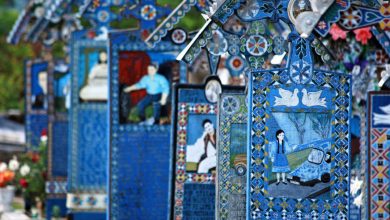
When it comes to salt water, the European continent offers plenty of options. The wild Atlantic Ocean, the sunny Mediterranean, the ebb and flow of the North Sea all make for great seaside experiences. Some, however, refer to the Baltic sea as a salty puddle for ferries. Rügen is the most suitable example to prove this image wrong: located in the upper corner of Eastern Germany, this island is a very popular tourist destination. Since the autumn chill is approaching, the masses will be gone and woods, waves, and wind will belong to the individual adventurer.
Rügen: A Treasure Chest Full of Historical Pearls
When arriving in Rügen, travelers will likely journey through Binz. This small town is the island’s most crowded destination, and always has events on offer. Travelers will find no opulent hotels, just white, wooden beach villas of coastal architecture. Through decades of tourism, its panorama has remained true to the Zeitgeist of the 19th century. After reunification, the German government earmarked funds for the renovation of buildings and roads.
Prora, on the other hand, offers a very different experience. Also known as the Colossus of Prora, this enormous waterfront building complex is a symbol of Third Reich architecture. Its builders intended for it to host up 20,000 people. During the Nazi era, the KdF (Kraft Durch Freude, or Strength Through Joy, a party organ devoted to recreational activities) acquired land on the island. The KdF planned for Seebad Rügen to become the biggest and most modern seaside resort in Europe, stretching 4.5 kilometres. However, it remained unfinished due to the Outbreak of World War II. After its destruction during the war, only five of the original eight apartment blocks remain, for a total length of about 2.5 kilometers.
The pretty town of Sellin, however, makes one forget the horrors of the past. Colourful rows of houses, small shops full of amber and restaurant with local specialties adorn the streets. The place is also home to one of Rügen’s emblems – the Sellin pier. Today, Sellin is a perfect starting point for excursions – for instance, to the Jamsund National Park.

A Paradise to Conquer
Uncountable beech trees characterise the Jasmund National Park. The Park has an exceptionally wide range of habitats thanks to the complex effects of climate, relief and soil. Since 2011, its beech forest is listed as a UNESCO World Heritage site. The 3,000-hectare forest invites explorers to take walks along the ancient trunks and below protective treetops.
In addition to beech trees, this section of Rügen sports its imposing Chalk Cliffs. They extend over a length of 15 kilometers on the peninsula Jasmund. The 120-meter-high rocks arose more than 50 million years ago from calcareous, fossil-like remains of various small animals, sand, clay and other rocks. The Chalk Cliffs have to endure constant erosion. With each storm, the rock changes and large pieces break out of the rocks and occasionally tear entire trees into the sea. A transient, but evolving beauty. This uniqueness was immortalised in 1818 by the German painter Caspar David Friedrich.

The Pirates of the Baltics
Some mysteries hide in those woods. Many waves ago, the notorious pirate Klaus Störtebeker was up to mischief. He and the “Victual Brothers” attacked ships of wealthy merchants to bring home gold and silver. They called themselves “Likedeeler” (= “equal sharers”), because they divided the plunder equally among them and the poor.
When the pirates were eventually condemned to beheading in Hamburg, Störtebeker had a last wish: all men he could pass with a severed head, should be saved from death. Störtebeker was beheaded, but with an upright gait the bloody body walked past eleven men. Then, however, the hangman tripped him up and he fell to the ground – all other fellows were beheaded. There are many legends about the pirate who is an essential part of Northern German folklore. Today, the Störetebeker Festival in Rügen brings the saga to life with live performances.
Hiddensee – Hidden in the Sea
If Rügen is still too “lively” for the above-mentioned reasons, one can continue the adventure on the near island of Hiddensee. “Dat söte Länneken” (local dialect for “the sweet land”) is proudly car-free. There are no engines to overshadow the shrieking of seagulls. No parking lots ruining the beach panorama. No emissions polluting the Baltic air.
Rügen’s little sister boasts of its picturesque cottages, crystal clear water and classic Northern German lighthouses, from which one can observe the peaceful sea. In autumn, a fabulous spectacle of nature takes place: the cranes move from the north into their winter quarters and take a break on Hiddensee – a very symbolic event, isn’t it?





